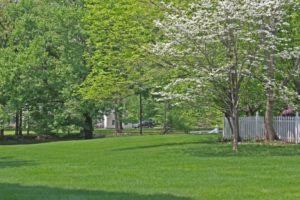
Fertilizing with DIMENSION Crabgrass Control – Crabgrass is an annual grassy weed. Seeds begin to germinate in early May and continue germinating into July. The crabgrass plants grow slowly until late June when the soil is thoroughly warm, then take off in July and August, spreading throughout sunny areas of lawns and crowding out semi-dormant desirable grasses. Although post-emergent crabgrass control products are now available that are quite effective, the best and easiest way to eliminate crabgrass from your lawns is to apply DIMENSION pre-emergent crabgrass control with organic-based 17-2-4 slow-release fertilizer in April. This will prevent crabgrass seed germination for up to 16 weeks, long enough to span crabgrass season AND gently feed the lawn through late spring.
Fertilizing without Crabgrass Control – For those of you with very shady lawns (who don’t have to deal with crabgrass), those of you who have recently seeded lawns and seed germination is not yet complete, and those of you who plan to seed sometime later this spring (ill advised except in emergency situations), you will still want to feed your lawns this spring. We sell an excellent slow-release (8 weeks) organic-based, controlled-release 16-2-3 fertilizer.
Broadleaf Weed Control with liquid TRIMEC – Broadleaf weeds can ONLY be killed when leaves and/or roots are ACTIVELY growing. Some are active in March & April (cool season perennials and winter annuals) such as ground ivy, wild violets, chickweed and hairy bittercress. Others are warm season weeds and don’t grow actively until late April, May and June (warm season perennials and summer annuals) such as dandelions, plantain, oxalis and spurge. As a general rule in nature, active growth BEGINS on warm weather weeds with flower bloom, so it’s best to wait at least until the weeds are in full bloom. Apply liquid TRIMEC herbicide to actively growing weedy lawns and watch the weeds fade away without harming desirable turf at all. Do not apply TRIMEC when rain is expected within 12-24 hours, and avoid mowing lawns for 24 hours before or after application.
Spring Seeding – As a general rule, never seed in the spring unless you have an absolute emergency (brand new lawn or section, construction repair, heavy shade). In the spring, soil temperatures are cool until well into May and seed germination will be slow and incomplete. When you seed, you cannot do either crabgrass or broadleaf weed control until young grass establishment is complete, so weeds will compete with the young seedlings. And seed sown in the spring will not have time to establish much of a root system, which means summer drought and heat will greatly thin the new lawn. In summary, only seed in the spring if you absolutely have to. Seeding is best done by far in late August, September and October.
Core Aerating and/or Liming in April – Because we are blessed with heavy, clayey, acidic soils in southeastern PA, we must regularly amend the soils we’re trying to grow our lovely lawns in. Liming regularly (at least once a year) sweetens the acidic soil and allows fertilizers to work more effectively, and core aerating (the removal of soil plugs from the lawn by running an aerator over it) once or twice a year enables moisture to enter deeper into the soil and creates deeper, denser root systems. April is a great time to lime with easy-to-spread pelletized lime or Cal-Turf Pro high efficiency lime. Core aeration can be done any time when turf is growing actively (spring or fall) and when there’s enough soil moisture to allow the aerators to pull 2”-3” long plugs.
